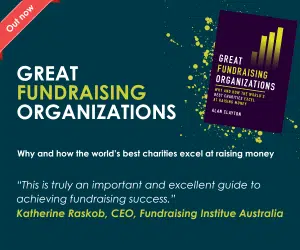British fundraising suffering from an ‘innovation deficit’
British fundraising is suffering from an “innovation deficit”, delegates to the IoF’s innovation conference earlier this month were told.
Opening the conference, Kevin Waudby, partner at conference supporter Good Innovation, said that the percentage of charitable giving had remained static at 0.4 per cent of household expenditure for 15 years.
“We are doing a lot of asking but we are not shifting that figure,” he told delegates. “That’s why this conference is so important because in the UK there’s an innovation deficit as we focus on incremental innovation in products that we feel comfortable with. But we are not good at taking at taking risks on new products.”
Waudby suggested there were five factors underpinning the deficit:
1) ‘Safe’ leadership – which assumes that innovation would “just happen” and did not set aside the time or space to allow innovation to develop, often driven by a focus on short-term targets and an aversion to risk
2) In-fighting for the ‘emotional’ pound – which assumes that giving happens across a spectrum of motivations, but that the sector currently focuses overly on generating an emotional response to encourage giving, rather than other, more transactional but under-explored, motivations
3) Insight-lite new product development – which assumes the sector relies too much on data as the only source of ‘insight’ into new product development; but relying on data alone would not provide the ‘depth’ to the problems innovative fundraising is trying to solve.
4) Innovation ‘in-capability’ – which assumes that developing and driving new ideas to deliver value takes a broad range of skills and expertise that are as yet generally under-developed in the sector
5) Creativity is the same thing as innovation – which assumes that there’s still a mistaken belief that creativity and ideas are the end game of innovation, rather than the hard work of actually delivering new ideas to market and adding value to the bottom line.
Three types of innovation at CRUK
Waudby’s arguments were supported by Richard Taylor, CRUK’s ceo and chair of the Institute of Fundraising, who said the sector was “lazy” in the way it came up with new charity fundraising ideas to deal with the challenges facing individual giving.
“We like look for something shiny and new and we badge it,” he said. “But we are nibbling at the same market and not growing it. Perhaps those who take more risks will get a bigger slice of the pie.”
Taylor explained that CRUK focused on three types of innovation:
1. Strategic – identifying strategic gaps in the charity’s fundraising, such as not having a presence on a particular fundraising medium, and coming up with new ideas to solve that. Speaking later at the conference, Janine Chandler, CRUK’s head of innovation development, cited Dryathalon, Citizen Science and the Race for Life app as some of CRUK’s successful strategic innovations. But she also said there had been some strategic failures, including Man vs Everything and Mute A Mate.
2. Radical – looking forward to the future issues and “reinventing” the way fundraising is done to be ready to meet those challenges. As radical innovators, Taylor said CRUK saw itself as “having a leadership role in the sector” in respect of innovation, “imagining what fundraising might be like 10 years from now”.
3. Tactical – opportunistic innovation that picks up on trends and allows CRUK to “play in the same space” as other charities.
The approaches to innovation at Mars
At a different session at the conference, David Thomas, innovation programme leader at confectionary and pet food company Mars, described how the company’s innovations process had gone through three stages since the 1990s.
Idea-centric (1990s) – product development was led by the Mars team coming up with new ideas. This was the time when “ideas were gold” but there was “no need to talk to consumers to find out what they wanted, you’d just have to get the marketing team in the room and brainstorm”.
Insight-centric (2000s) – product development was led by identifying customer needs and wants and fulfilling them. Taylor said Mars operated by the principle of ‘deep customer immersion’. Quality of goods and value for money became the goal.
Growth-centric (2010s) – Taylor said that innovation is now seen as a strategy that has growth as the outcome with four components: mergers and acquisitions, expansion, redefining brand and new products.
He also cited research conducted by the Harvard Business Review that showed that 42 per cent of the success of a new initiative is attributable to the commitment of senior leadership.
Advertisement
- • Speaking the following week at the International Fundraising Congress in the Netherlands, professor Adrian Sergeant, director of Plymouth University’s Centre for Sustainable Philanthropy said that “failure is the acceptable cost of innovation.”




